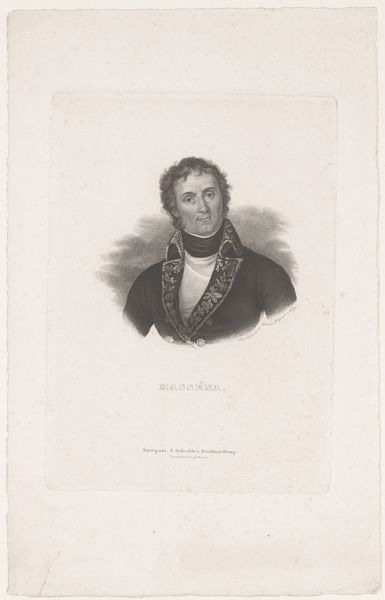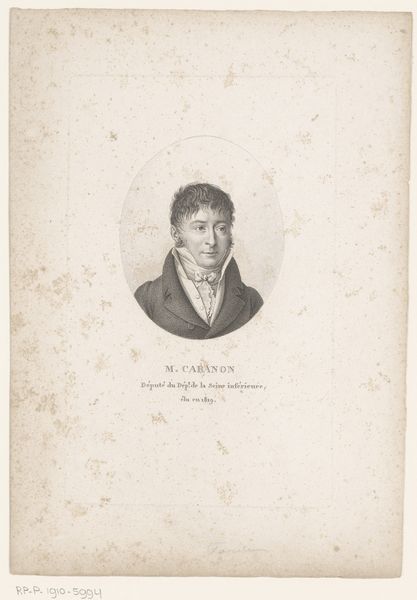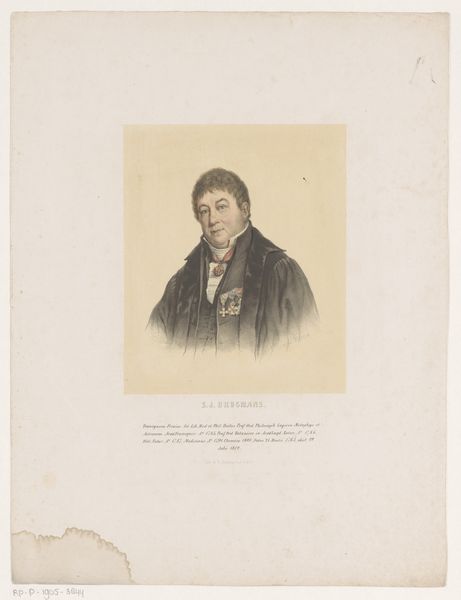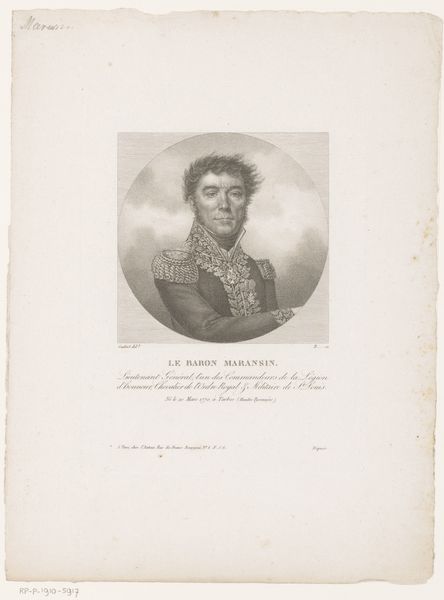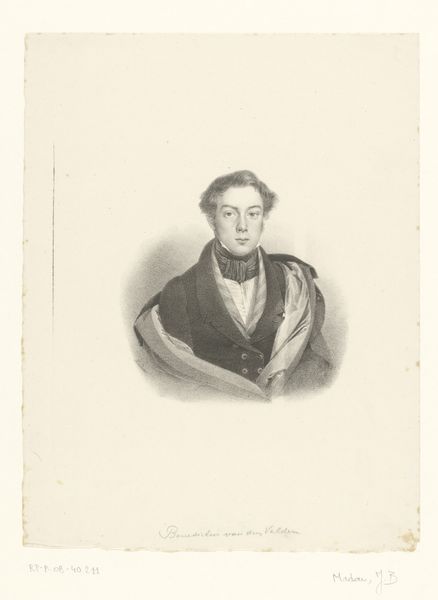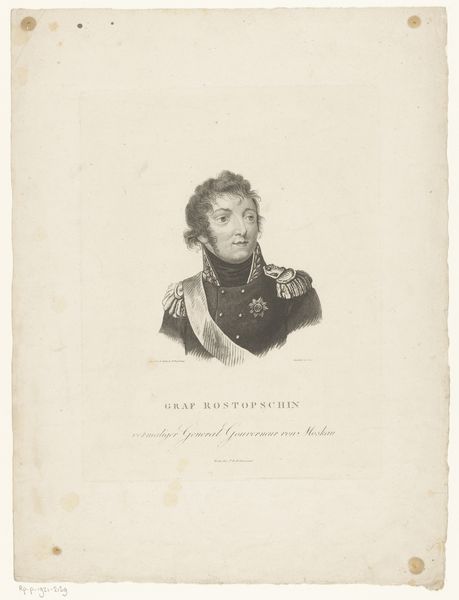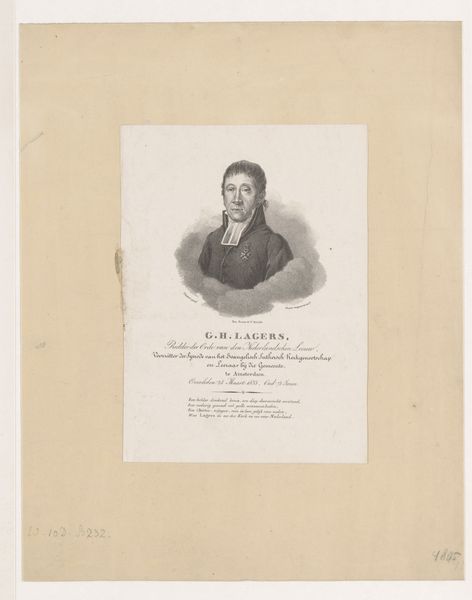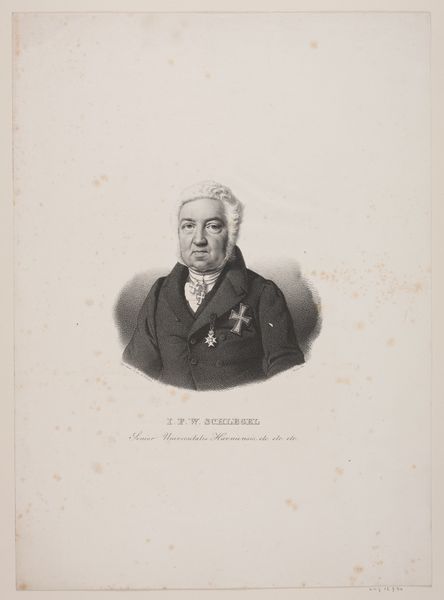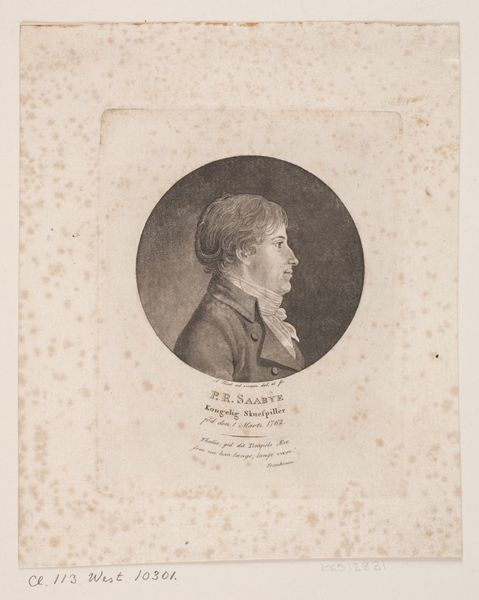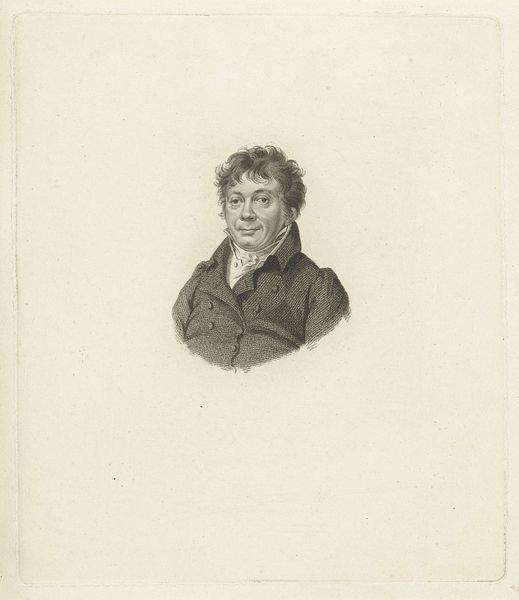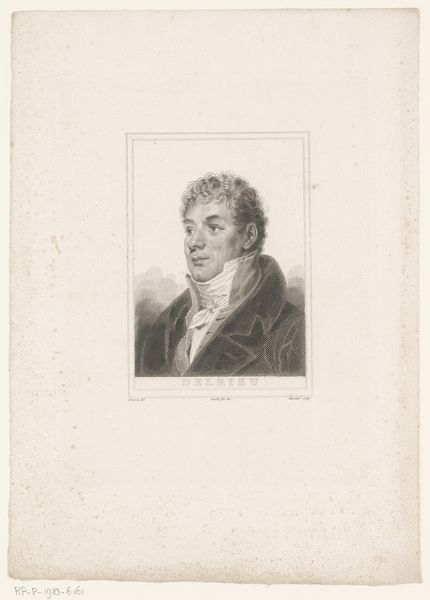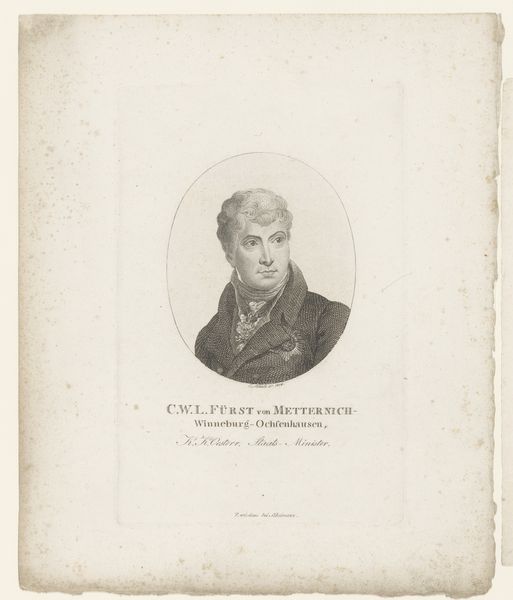
print, graphite, engraving
portrait
pencil drawn
dutch-golden-age
pencil sketch
form
pencil drawing
line
graphite
pencil work
engraving
realism
Dimensions: height 485 mm, width 345 mm
Copyright: Rijks Museum: Open Domain
This is Leendert Springer’s portrait of Sebald Justinus Brugmans, made as an engraving on paper in 1843. The nature of engraving is to take a metal plate and incise an image into it, so that it can be printed many times. The character of the medium is all about accuracy and repeatability. Look closely, and you can see how the image is comprised of thousands of tiny lines, built up to create the impression of tone and shadow. The artist has clearly mastered the burin, the tool used to make these marks. The lines create an almost photographic likeness of Brugmans. Engraving such a portrait was slow and painstaking. However, it allowed for the widespread circulation of Brugmans' image. This was part of the broader print culture of the 19th century, which commodified images and distributed them widely. This portrait testifies to the growing power of mechanical reproduction, in a world increasingly shaped by capitalism and industrialization.
Comments
No comments
Be the first to comment and join the conversation on the ultimate creative platform.
